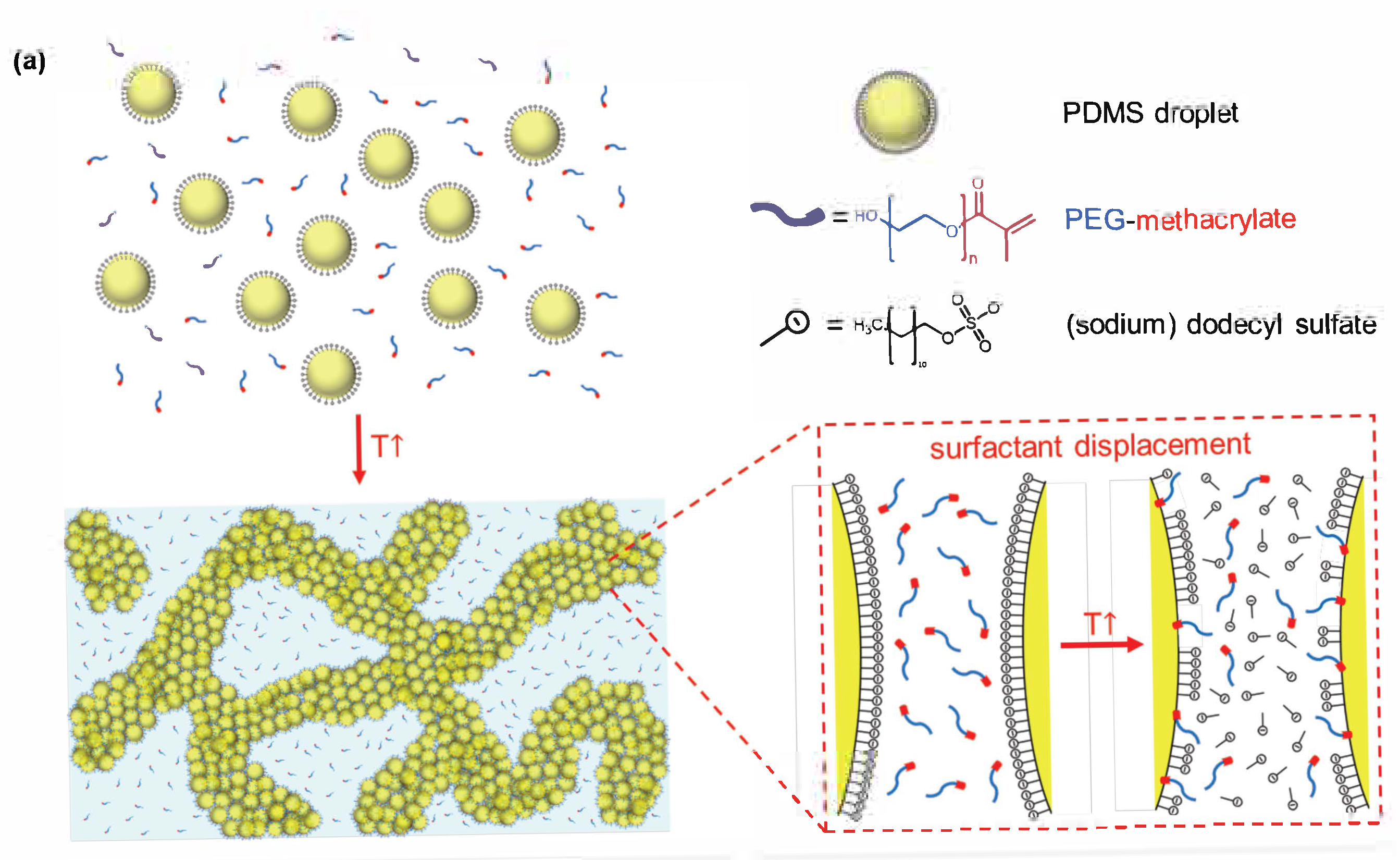 Doyle has discovered a new way to thermally-induce gelation of nanoemulsions. They developed a platform wherein colloidal gelation is controlled by tuning repulsive interactions. By including amphiphilic oligomers in colloidal suspensions, the ionic surfactants on the colloids are replaced by the nonionic oligomer surfactants at elevated temperatures, leading to a decrease in electrostatic repulsion. The mechanism was examined by carefully characterizing the colloids, and subsequently allowing the construction of interparticle potentials to capture the material behaviors. With the thermally-triggered surfactant displacement, the dispersion assembles into a macroporous viscoelastic network, and the gelling mechanism is robust over a wide range of compositions, colloid sizes and component chemistries. This stimulus-responsive gelation platform is general and offers new strategies to engineer complex viscoelastic soft materials.
Doyle has discovered a new way to thermally-induce gelation of nanoemulsions. They developed a platform wherein colloidal gelation is controlled by tuning repulsive interactions. By including amphiphilic oligomers in colloidal suspensions, the ionic surfactants on the colloids are replaced by the nonionic oligomer surfactants at elevated temperatures, leading to a decrease in electrostatic repulsion. The mechanism was examined by carefully characterizing the colloids, and subsequently allowing the construction of interparticle potentials to capture the material behaviors. With the thermally-triggered surfactant displacement, the dispersion assembles into a macroporous viscoelastic network, and the gelling mechanism is robust over a wide range of compositions, colloid sizes and component chemistries. This stimulus-responsive gelation platform is general and offers new strategies to engineer complex viscoelastic soft materials.